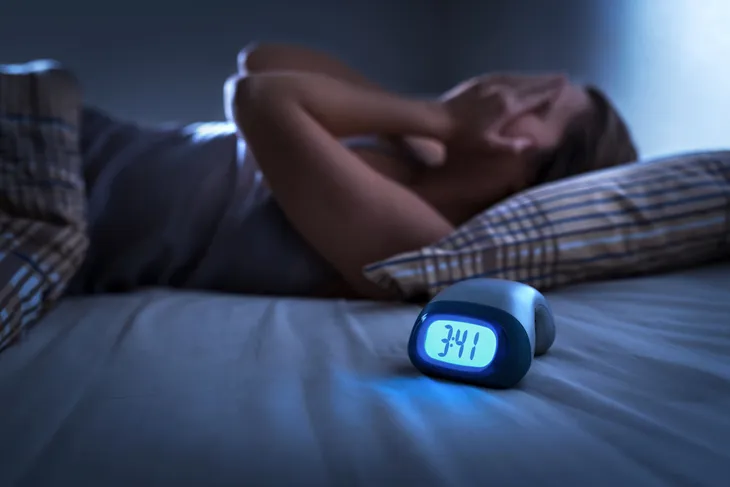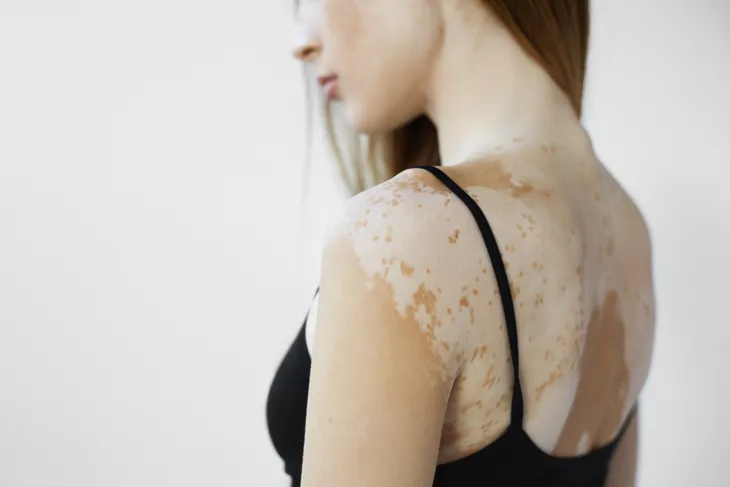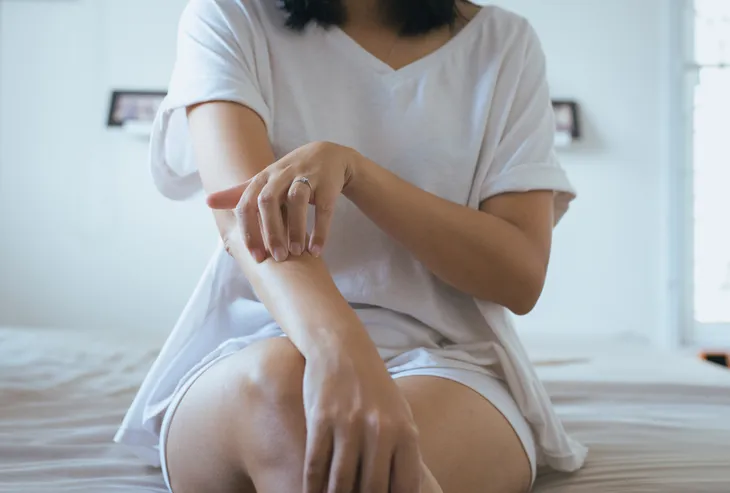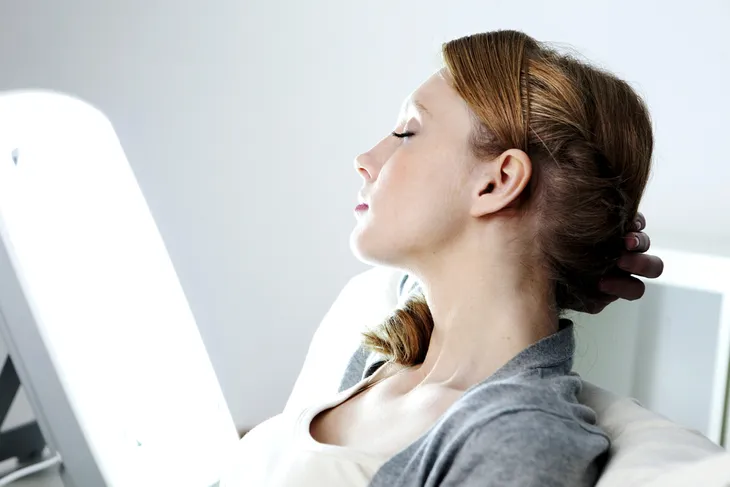Are you feeling particularly moody or perhaps you’re having difficulty sleeping. One effective treatment might be light therapy, a non-invasive method that may help treat certain mental health conditions.
Light therapy is most often used to help treat seasonal affective disorder (SAD) but it turns out it may benefit a bunch of other conditions too. Let’s take a look at what light therapy exactly is and all the amazing benefits it has to offer.
What Is Light Therapy?
Light therapy, also referred to as phototherapy or bright light therapy, is a form of therapy that is used to treat a variety of conditions from SAD to other forms of depression, sleep disorders, and more.
The light therapy box provides a bright light that mimics the natural sunlight. The Mayo Clinic says, “light therapy is thought to affect brain chemicals linked to mood and sleep, easing SAD symptoms.”
How It Works and When to Use It
Everyday Health says in order for the light box to be effective, it should have a minimum intensity of 2,500-lux. This is about the equivalent of a slightly overcast day. You can set the light box next to you while you work or while you’re relaxing watching tv. It should be directed at your eyes but don’t look at it directly as it can cause eye damage.
The source says, “light therapy usually works best in the morning, mimicking the sun’s natural cycle.” The duration of the session can be anywhere from 15-minutes up to 2-hours depending on the light’s intensity. The source suggests starting with shorter intervals and working your way up to longer sessions.
Risks
The good news is there are no known significant health risks with light therapy. That said, it’s always important to talk to your doctor before starting light therapy, especially if you have sensitivity to light.
There are a few potential mild side effects worth noting. For starters, you may experience eye strain from the bright light. Headache, nausea, and irritability are also possible but Everyday Health notes these mild symptoms should go away in a few days. The source also says individuals with bipolar disorder are at risk for manic symptoms with light therapy and should err on the side of caution.
If you choose to use natural sunlight instead of a light box make sure you protect your skin from harmful UV rays by using sunscreen.
The Benefits of Light Therapy
Verywell Health explains research shows that light therapy benefits are often seen after just one session, which is typically about 15 to 60-minutes. Another study says improvements are usually seen after 20-minutes but the best results occur with daily 40-minute sessions over the course of several weeks.
Typical benefits that can be seen after light therapy sessions include increased alertness, mood, energy, happiness, concentration, and attention. While light therapy is primarily used to boost moods and help with symptoms of SAD as well as some other forms of depression, it has also been known to treat other conditions too. Let’s take a look at all the potential conditions light therapy can help.
Seasonal Affective Disorder (SAD)
As mentioned earlier, one of the most popular uses of light therapy is to help treat the symptoms of seasonal affective disorder (SAD). This form of depression occurs at the same time of year, typically when there is less sunlight.
The light box works by boosting melatonin and serotonin, both hormones that help with mood and sleep. Doctors often recommend roughly 30-minutes of light therapy each day but talk to your doctor to find out what’s best for you.
It’s also worth mentioning, light therapy has also been proven to help treat non-seasonal depression. Your doctor may recommend medication in combination with light therapy.
Sleep Disorders
Light therapy may also benefit some sleep disorders. Do you suffer from insomnia, a common sleep disorder that makes it hard to fall asleep and stay asleep? You might be suffering from it because of a disruption in your circadian rhythm.
For those that don’t know, “your circadian rhythm is part of your body’s internal clock that causes you to feel alert and awake during the daytime and sleepy at night,” says Healthline. This is how light therapy can help. The source says, when used properly, light therapy can help reset your circadian rhythm. As a result, this can help improve your sleep.
Jet Lag
On the topic of sleep, light therapy may also help improve jet lag. This condition occurs when your body travels across time zones and “your circadian rhythm remains synchronized with your old location,” says the Sleep Foundation.
Jet lag sufferers know how tiring it can be, literally! Typically you feel sleepy for a few days until your body has time to catch up to the new location. Light therapy for jet lag boasts the same benefits as it does for sleep disorders. By exposing your body to light for a specific and regular amount of time when you’re supposed to be awake, you can help reset your circadian rhythm in the time zone you’re in. While you may not need to do this if you only travel for vacation occasionally, this may be a beneficial method if you travel frequently for business (or pleasure).
 Tero Vesalainen / Shutterstock
Tero Vesalainen / ShutterstockDementia
Light therapy may also be able to benefit individuals with dementia. WebMD says, “studies show that having natural, outdoor-like light during the day in rooms of people with dementia can help them sleep better and show less agitation.”
The source also notes that light therapy may also help individuals with depression and ultimately, slow the effects of dementia. If you’re at risk for dementia or know someone with it, ask your doctor about the benefits of light therapy.
Vitiligo
Certain types of light therapy may also help skin conditions too, including vitiligo. Vitiligo is a long-term skin condition where pale white patches develop on the skin due to a lack of melanin (pigment in the skin). It commonly affects the face, neck, hands, and creases, however, it can happen anywhere on the skin.
Two types of light therapy may help treat vitiligo. The first type uses a narrow-band ultraviolet B (nbUVB) light where you sit in a box or booth and a doctor uses lasers to apply the light to your skin. The second type is called PUVA, which is an ultraviolet A (UVA) light. This can come from the sun or booth and is typically used along with medication.
WebMD says, “both light treatments are about 70% effective at bringing color back to the skin, but PUVA can raise your odds of skin cancer.”
Psoriasis
Light therapy may also benefit psoriasis, a skin disease that causes red, itchy scaly patches. Unfortunately, psoriasis is a chronic disease with no cure. Sufferers typically go through cycles and experience flare-ups every few weeks or months. Luckily light therapy may help.
WebMD says the nbUVB light from a light box or laser may help “slow the growth of skin cells, calm an overactive immune system, and ease inflammation and itching.” The source also notes PUVA light therapy may also help treat psoriasis.
Is Light Therapy Right for You?
While light therapy alone won’t cure the conditions we mentioned above, it can be a helpful tool in improving some of your symptoms. Keep in mind, it can take a few days up to a few weeks to start to notice the effects so don’t give up after a few sessions.
Light therapy is generally safe but it’s always a good idea to talk to your doctor first before starting any new form of treatment. However, you should definitely err on the side of caution if you have a condition or take medication that makes you sensitive to light.
Things to Consider When Choosing a Light Therapy Device
There are many light therapy boxes on the market from online shops to drug stores. Do your research and work with your doctor to find the right one for you.
One important thing to consider when choosing a light therapy device is the intensity. The Mayo Clinic says, “the intensity of the light box is recorded in lux, which is a measure of the amount of light you receive.” For example, the source says a 10,000-lux device is typically recommended for SAD.
Each session is usually about 20 to 30-minutes but a device that has a lower intensity may require a longer session. This is why it’s important to work with your doctor to find the right device for you and your condition.
How to Make the Most of Your Sessions
There are a few simple steps you can take to make the most of your light therapy sessions. For starters, be consistent. By sticking to a daily routine and using the light box consistently will help you see improvement and maintain those improvements.
Next, keep a log. Track when you start light therapy and when you finish, as well as your symptoms. This is especially important if you’re using light therapy for SAD. Keeping a log will ensure you start light therapy early enough in the fall and continue long enough into the spring. Stopping the therapy too soon may cause your symptoms to return.
Finally, some conditions can’t rely on light therapy alone. In this case, you’ll need to work with your doctor to find out which other types of treatment you require. Be sure to follow your doctor’s recommendations for best results.















